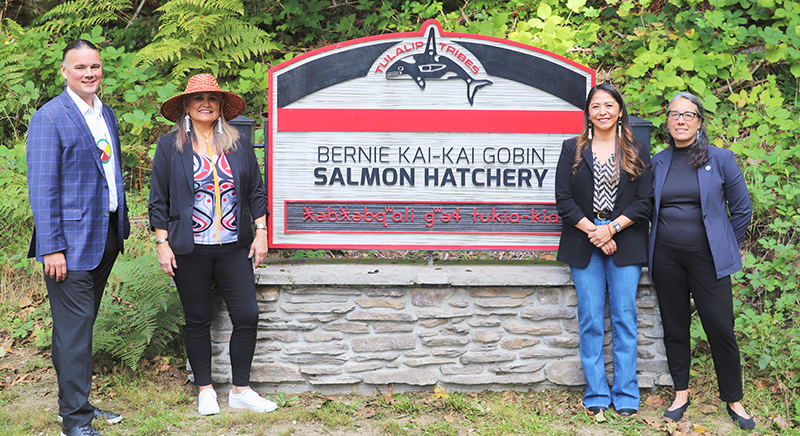
By Micheal Rios in collaboration with NOAA Fisheries
Coast Salish leadership from Metlakatla to Yakama Nation, and many tribes in between, gathered with federal and state leaders at the Tulalip Reservation on October 3 to celebrate $240 million in federal funding for tribal hatcheries. This Inflation Reduction Act investment offers much-needed financial assistance to 27 tribes from Northern California to Southeast Alaska meet urgent maintenance and modernization needs of their on-reservation salmon hatchery programs.
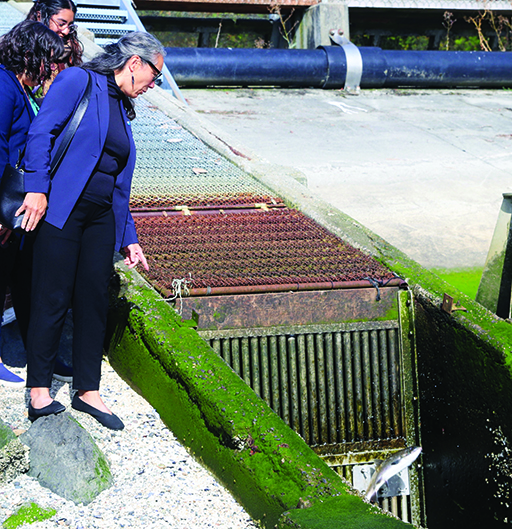
National Oceanic and Atmospheric Administration (NOAA) Fisheries partnered with the Interior Department’s Bureau of Indian Affairs (BIA) to disperse the funds. Initial payments of $2 million are currently being distributed to each of the 27 tribes. The remaining $186 million will be allocated by competitive grants in 2025.
“I want to thank NOAA for listening to us. We, as tribal governments, go back and forth a lot with Washington D.C. and Olympia. Sometimes we are met with closed ears, and we can not get the work done unless our elected leaders on the state and federal levels are willing to listen to what we have to say,” explained Tulalip Vice Chairwoman Misty Napeahi. “As tribes, we’ve had to learn to embrace western science because it gives us the data we need to get our points across.
“We are trying to teach a nation how to see the Earth through an Indigenous lens. That we are not here to conquer it nor extract all it’s resources, but to live in harmony as one with nature,” continued Misty. “This is our science given to us by the Creator and passed down through our ancestors. We know we have to use our science to save our lands, to save our oceans, and to save our way of life for our future generations. But we can’t do this without people being willing to listen. I raise my hands to NOAA for not only listening to us, but being willing to invest in our Indigenous knowledge and science.”
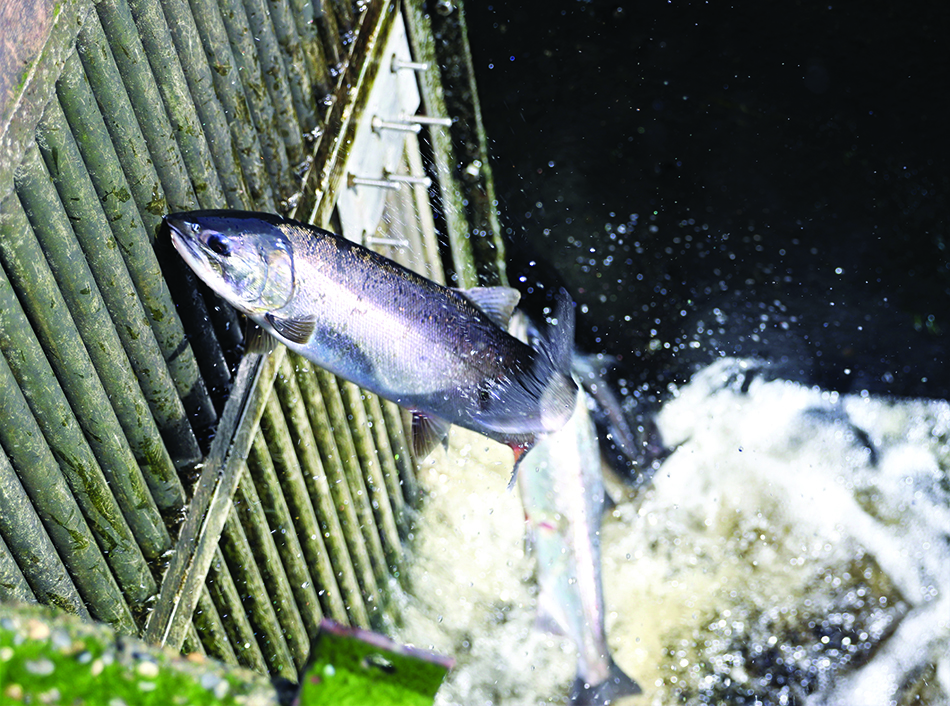
Treaties with the U.S. government in the 1850s, such as our Point Elliot Treaty, promised many tribes hunting and fishing rights. However, the decline of salmon in Pacific Northwest rivers has place great burden on hatcheries to provide the bulk of fish necessary to sustain tribal fisheries. The commitment of funding by the Biden-Harris Administration is a step toward delivering on the treaty promises that tribes have fish to catch.
“In the course of 3 months, from starting conversations, I started getting letters from 22 tribes with an agreed path forward,” said Jennifer Quan, West Coast Regional Administrator for NOAA Fisheries, to the crowd of people gathered within the TRC’s Orca Ballroom. “Thank you to all the tribes who rolled up their sleeves and got to an agreement very fast. It’s helping us get this program on the ground quickly. I think this is the fastest the tribes and the federal government have ever moved together.”
Many Leaders Attend Celebration
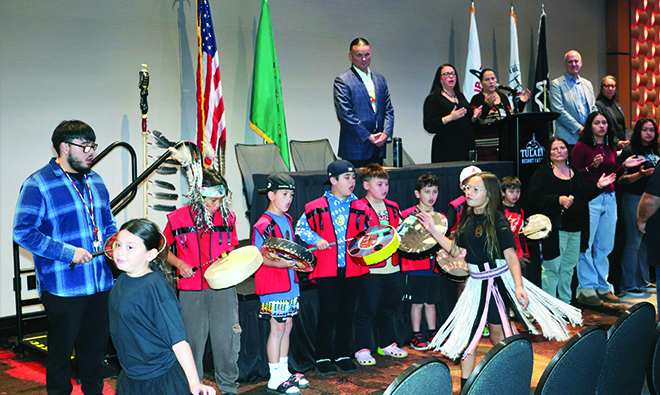
A Tulalip Veterans color guard and group of pint-sized culture bearers from Quil Ceda Elementary kicked off the celebratory event, which Tulalip Chairwoman Teri Gobin opened with a prayer passed down from her father, Stan Jones. Vice Chair Misty Napeahi emceed a panel of speakers that included Governor Jay Inslee, U.S. Representative Rick Larsen, and Bryan Newland, Assistant Secretary of Indian Affairs for the Department of the Interior.
“I’m so excited for today’s announcement that a quarter of a billion dollars is going to tribal fish hatcheries to help restore salmon populations,” said Assistant Secretary Newland (Ojibwe). “Equally as important is what this investment represents; its an investment in tribal-led management and caretaking of our salmon relatives. We know that when tribes were managing these ecosystems and our relationships with our relatives on land and in both the air and sea, that was an era of abundance. We need tribes leading the efforts to restore salmon, leading partnerships with local, state, and federal agencies to restore critical habitat, if we are to restore balance to our relationship framework with our natural environment. That’s what is necessary for us to return to an era of abundance.”
Tribal leaders and elder representation from many of the 27 tribes attended the celebration located on the shores of the Salish Sea. Tribal representation from across the Pacific Northwest included the Metlakatla of Southeast Alaska, Quileute, Jamestown S’Klallam, Lummi Nation, Stillaguamish, Quinault, Yakama Nation, Warm Springs, Suquamish, Sauk-Suiattle and Nez Peirce.
The event continued from the Resort Casino with visits to Tulalip hatchery facilities. The lower pond of Tulalip Creek teemed with Coho salmon returning to their release site, as tribal fishing boats dotted the expanse of Tulalip Bay. “Ninety-five percent of Chinook and Coho salmon harvested by Tulalip fisherman come from our local hatcheries,” informed Jason Gobin, Executive Director of Natural Resources.
“While our local hatchery is still productive, funding will help address deferred maintenance and update hatchery operations to the latest technology. Decades-old hatchery infrastructure needs upgrades to release salmon smolts and the collection of brood stock with more efficiency and targeted timing,” Jason added.
Hatchery Requires Updates
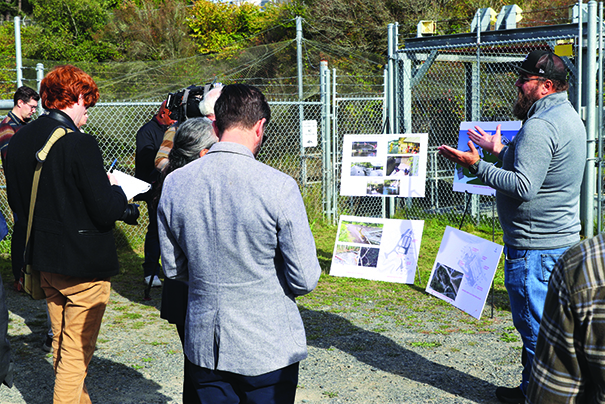
Several members of Tulalip’s Natural Resources department presented initial plans for modernizing the Tribe’s Bernie ‘Kai-Kai’ Gobin Salmon Hatchery. While the Tribe has already set aside funds for renovations, federal resources will kick-start the improvements. Most other eligible tribes, including the Nez Perce Tribe and the Lummi Nation, have identified specific plans for hatchery upgrades.
“This is a much-needed injection into the infrastructure that supports all these hatcheries,” Jason told media members during the hatcheries tour.
Tribal salmon hatcheries help the U.S. government fulfill its treaty obligations, while also removing fishing pressure on wild stocks. Some tribal hatchery programs have also led to the rebound of wild salmon. For example, the Nez Perce efforts have revitalized Snake River fall-run Chinook salmon; the Lummi Nation’s hatchery program has restored spring-run Chinook in the Nooksack River.
Beyond treaty promises and conservation goals, tribal hatcheries help drive on-reservation employment, salmon nutrition for specific ceremonies, and the preservation of cultural traditions. The approximate 11.5 million juvenile salmon raised and released each year contribute to the tens of millions of salmon produced annually by tribal hatcheries in Washington State alone.
“I know how hard the tribes have worked to keep these tribal hatcheries going, because they are so important to their culture and way of life,” reflected Jennifer, NOAA Regional Administrator. “I am proud that we have been able to provide such substantial new funding for the hatcheries. It tells me that the nation recognizes these hatcheries’ crucial role in delivering on the treaty promises that the government made to many tribes so long ago.”